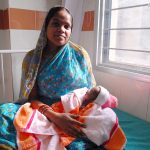It has been a year since the World Health Organization declared the coronavirus outbreak a public health emergency in January 2020. (It was declared a global pandemic in March.) Ubiquitous media coverage and multiple published reports have tracked active cases and fatalities, lockdowns and quarantines, social vulnerabilities and disparities, economic and business discontinuity, and shifting recovery and reopening markers. Monitoring case spikes and practicing social distancing have become a daily routine. Every day, it seems, we seek information to answer questions such as: “Where are the newly-reported cases?” “How many cases have occurred in my area?” “Where are the closest health facilities and testing sites?” or “Do we live in a community with socially vulnerable populations?”
Tracking the spread, identifying hot spots, locating vulnerable populations, and allocating resources to the neediest all require knowledge of location. A geographic information system (GIS) is a computer system for gathering, managing, and analyzing many types of data. GIS software, such as ArcGIS or QGIS, is being used widely in almost all fields by individuals, businesses, health organizations, research institutions, and government agencies. During the COVID-19 crisis, GIS is playing an instrumental role in informing decision-making by detecting the locations of the virus and analyzing spatial relationships across health, economic, and social data. To determine the high-risk communities, for example, GIS enables us to draw the geographic boundaries of a given population and assess the socio-demographic information within the affected areas. After collecting each separate layer of data—including age, income, living situation, newly increased or cumulative cases, medical resources, and healthcare capacities—GIS integrates these complicated layers and infers associations through mapping, modeling, and spatial analysis.
Geographic information systems advance our understanding of many global challenges.
Rather than listing all findings or showing lines of statistics for each community, GIS can produce graduated-color maps (often called choropleth maps) of the composite risk score, altering colors to display the trends that lead to plausible predictions. At a glance, we are able to quickly comprehend the situation by spotting clusters or communities that have changed from green (low-risk scores) to red (high-risk scores).
Informed intervention
This is the power of GIS: by describing the particular conditions of a given place and communicating the data in an easy-to-understand format, it serves comprehensive decision-making.
Public health agencies and decision-makers worldwide have relied on GIS technology to detect outbreak patterns and plan and implement targeted policy interventions. The JHU COVID-19 Dashboard, supported by the ArcGIS platform and the Esri Geospatial Cloud, has served as a valuable resource to map the outbreak and deliver information to many countries. In Canada, the COVID-19 Health Dashboard maps the relationship between the percentage of population over seventy to the population density in order to explore at-risk neighborhoods. In Singapore, the national park services produced Safe Distance @ Parks, an interactive map of visitorship status that provides information on whether it is a good time to visit their local parks or whether more restricted social distancing is in order. Switzerland implemented a crowdsourcing application that surveys people in order to track symptomatic individuals and identify areas with spike in, or local clustering of cases. Penn Medicine’s Predictive Healthcare Team built the susceptible, infected, and recovered (SIR) model CHIME (COVID-19 Hospital Impact Model for Epidemics), which provides up-to-date forecasts of the number of people to be hospitalized in the United States and, accordingly, the number of PPEs, ICU beds and ventilators that will be needed.
Communicating data in an easy-to-understand format, GIS enables comprehensive decision-making.
There is widespread use of GIS for COVID-19 response at the local level as well. The City of Tempe, Arizona constructed the Wastewater Dashboard, which tests and measures wastewater, to serve as an early warning system for the presence of COVID-19. The City of Baltimore provided the COVID-19 Asset Map to help residents identify and navigate critical resources and facilities nearby. The map is designed with socially vulnerable groups in mind; it delivers precise locations, including COVID-19 testing sites, youth food distribution sites, special grocery service for seniors, and primary care facilities for the uninsured. The Chicago Transit Authority (CTA) launched the COVID-19 Transit Dashboard to monitor the change and continuity of ridership. By incorporating the locations of people and businesses still in need of transportation, the tool ensures service availability to meet the demand for essential workers and businesses. Focusing on economic recovery, the City of Seattle mapped the location of each small business in the neighborhood and whether they are remaining open. The #SupportSeattleSmallBiz app helps businesses increase their exposure and keep the workforce supporting them employed.
GIS and vaccines
Although the distribution of vaccines in the US has begun and vaccinations are gradually ramping up, there are obstacles to efficient and timely vaccine distribution. GIS is contributing to the efforts to remove these obstacles. On December 17, 2020, Esri launched the Coronavirus Vaccine Distribution Solutions, designed to help provide easy and equitable access to vaccines to all populations by sharing public information, monitoring vaccine distribution, and providing information on medical resources, including enlisting medical volunteers.
By analyzing spatial components and geographical features, the knowledge of which facilitates effective decision-making, GIS advances our understanding of many global challenges. At the Keough School of Global Affairs, students learn to use GIS to visualize and solve real-world issues. They develop skills to deploy GIS as a computerized mapping tool to display spatial data; a data management tool to organize, geocode, and digitize new data; and, a data analysis tool to identify relationships, associations, and correlations among complex information.
Student research
Most importantly, the experience of using GIS develops spatial thinking as a means of addressing global issues and supporting the policy-making process. A few examples of student projects undertaken in my master’s class in GIS illustrate this point.
GIS is an effective tool for dealing with local food, health, and housing needs. Through spatial analysis, service planners can evaluate the capacity and accessibility of service provision locations and provide better interventions for the needy. For example, Dorcas Omowole performed multiple hot-spot analyses to assess the healthcare facilities in Nigeria and the mortality rate of children under five. Through regression analysis using both the number of facilities and healthcare quality, she identified the areas to prioritize for building new primary healthcare facilities to reduce mortality rates. Through a spatial examination of shelter affordability throughout Canada, Patrick Calderon identified the most unaffordable areas for housing and argued that policies should target improving transportation infrastructures to reduce commute times and provide tax incentives for young residents.
GIS helps us understand how to build infrastructures that advance health, employment, and economic development.
Samdrup Phurbu (Sangzhu Pubu) found a substantial discrepancy between the supply and demand for shelter programs for the homeless in California. He warned of the growing number of unaccompanied homeless minors and suggested potential areas for supplying shelters through spatial analysis. Focusing on a more disaggregated area, Sebastian Bascom assessed the prevalence and distribution of food deserts in Saint Joseph County, Indiana. By examining the correlation with multiple socio-demographic factors, including income, unemployment, minority population, and percentage vacant housing, he identified the additional need for the new food pantry and the importance of addressing the food crisis as a result of COVID-19.
Combined with demographic and transportation data, GIS facilitates our understanding of how infrastructure systems can be built better to advance health, employment, and economic development. Using GIS to map the employment status of all counties in the US, Jaclyn Biedronski found, for example, that Wayne County in West Virginia’s severely high unemployment rate is closely related to the lack of public transit. Ngoc Thang took his home country, Vietnam, as a case study of the impact of transportation infrastructures. After identifying that having a primary road is a significant factor in attracting foreign direct investment using traditional regression analysis, he performed geographically weighted regression to further identify prioritized regions of Vietnam. While working for the South Bend Pilot Program for the City of South Bend Office of Innovation, Derek Lee and Joshua Pine analyzed data from Transpo and Lyft rides, combined with local population information, in order to assess the impact of transportation gaps in South Bend for communities without adequate access to transportation infrastructure.
A key role in environmental research
Rooted in geography, GIS has a history of use for researching environmental and resource issues. Scientists, engineers, and social scientists use GIS as a bridge to perform interdisciplinary studies on topics such as climate change, renewable energy, sustainability, extreme events, and disaster management. Eleanor Jones examined the spatial distribution of palm oil mills in Indonesia and found a strong connection between deforestation and non-certified palm oils. Mehak Anjum Siddiquei mapped flood hazard risk to understand how it correlates with the unequal state of development in Pakistan. By overlaying the Human Development Index data, she identified areas to devote more resources and opportunities to mitigate flood hazards and improve economic growth. Rachel Gagnon examined the air pollution status in the Delhi NCR region of India and performed a site suitability analysis for determining optimal locations to build air purification systems.
GIS was also widely used to understand various natural and human-made extreme events, including school shootings studied by Jenna Ahn, missing immigrants studied by Cristian Saez Florez, wildfires in relation to climate change discussed by Mayra Garcia, and natural disasters in relation to public opinions and actions evaluated by Kara Venzian.
GIS is also widely used to understand events such as school shootings and wildfires.
Recently GIS has been used to perform qualitative research and assist in planning fieldwork. It is now increasingly applied in conflicts and peace research. To better understand the relationship between climate change and violent conflict, Sofia del Valle Trivelli examined the correlation between water stress and conflicts at different geographical locations in India, where water resources are not uniformly distributed across the country. Maria Camila Posse Gaez performed a time series analysis to examine the spatial distribution of three types of direct violence in Colombia from 1989 to 2018. She found a strong environmental impact regarding deforestation caused by violence and armed conflicts. María José Daza B also focused on Colombia and examined the effectiveness of the 2018 peace agreement in the 16 special development regions (PDET). By mapping and comparing armed conflict data and coca crops data, she tracked the success of the peace agreement in reducing violence in PDET regions, while specifying areas of concerns and rising post-accord conflict.
More than mapping
GIS is more than a mapping tool—it visualizes location information and draws the connections across multiple fields of data. Through the spatial analysis provided by GIS, we gain new insights from geographic data and discover new solutions undiscoverable by traditional statistical methods and technology. This is essential for solving problems in many areas, including crime, health, marketing, urban planning, education, environment, and economics.
The pandemic has vividly demonstrated the importance of geospatial information for effective and informed responses in the time of a global health crisis. As Jack Dangermond, the co-founder of Esri, observes: “GIS is like an intelligent nervous system for our planet at a time when humanity desperately needs one to address the environmental and humanitarian crises at hand.” Although we are still facing tremendous challenges, including managing food insecurity, addressing poverty and racial injustices, responding to conflicts and climate change, and combating the pandemic, GIS provides a crucial spatial lens through which to forge ever more effective solutions.
Sisi Meng is visiting assistant professor of economics at Notre Dame’s Keough School of Global Affairs. An affiliate of Notre Dame’s Environmental Change Initiative, she researches environmental and natural resource economics.
This article is part of a series of blog posts published by the Keough School of Global Affairs. Dignity and Development provides in-depth analysis of global challenges through the lens of integral human development.



